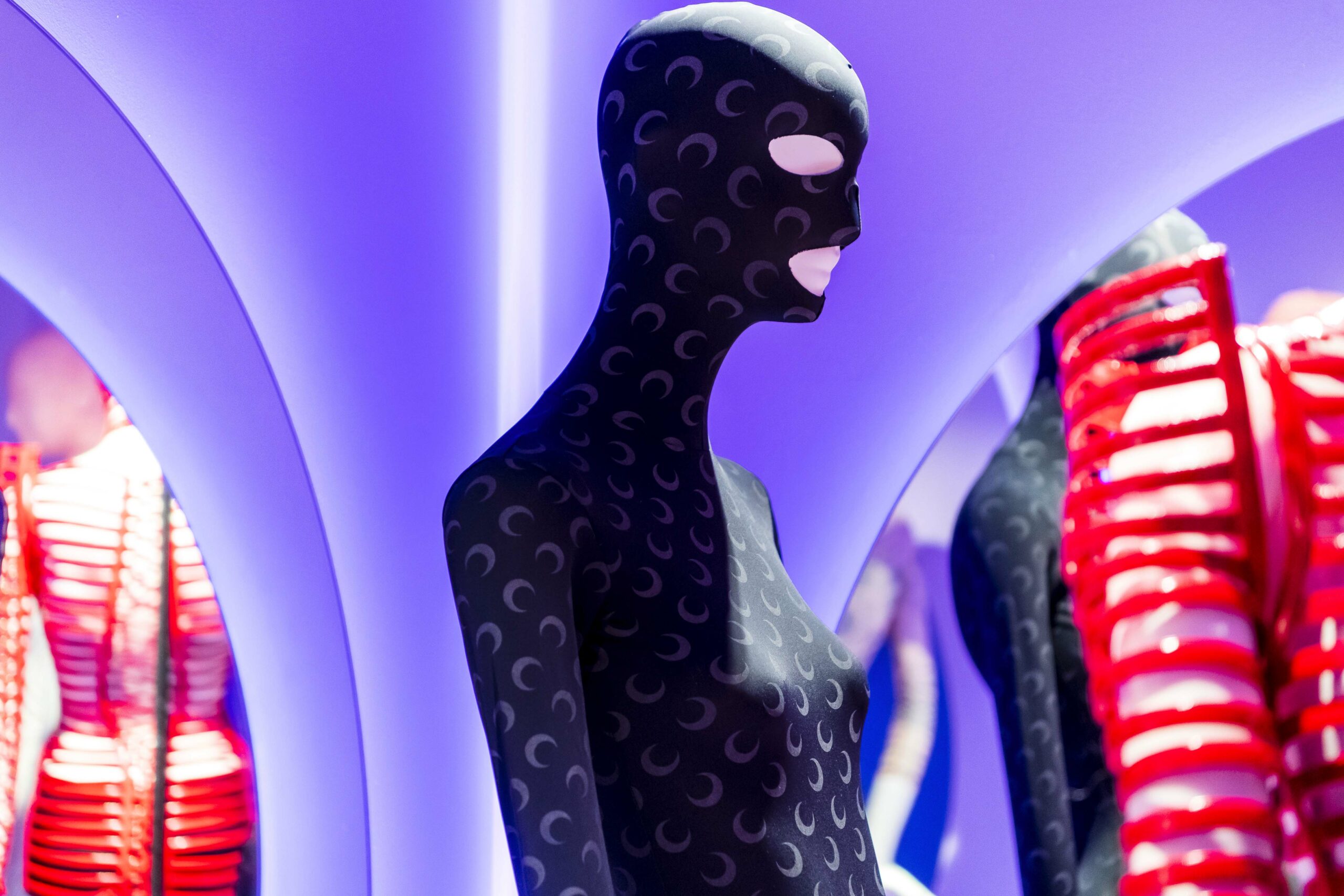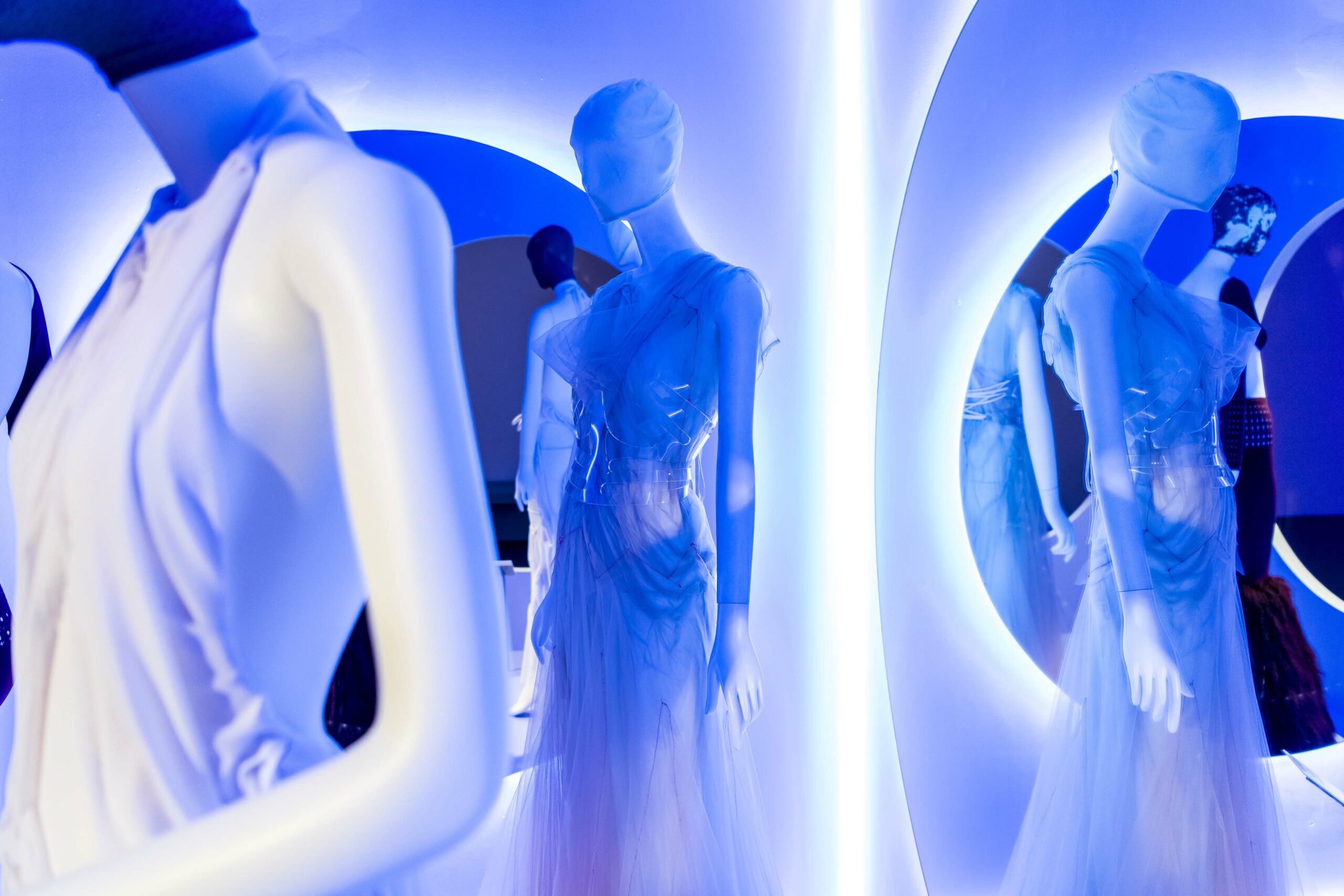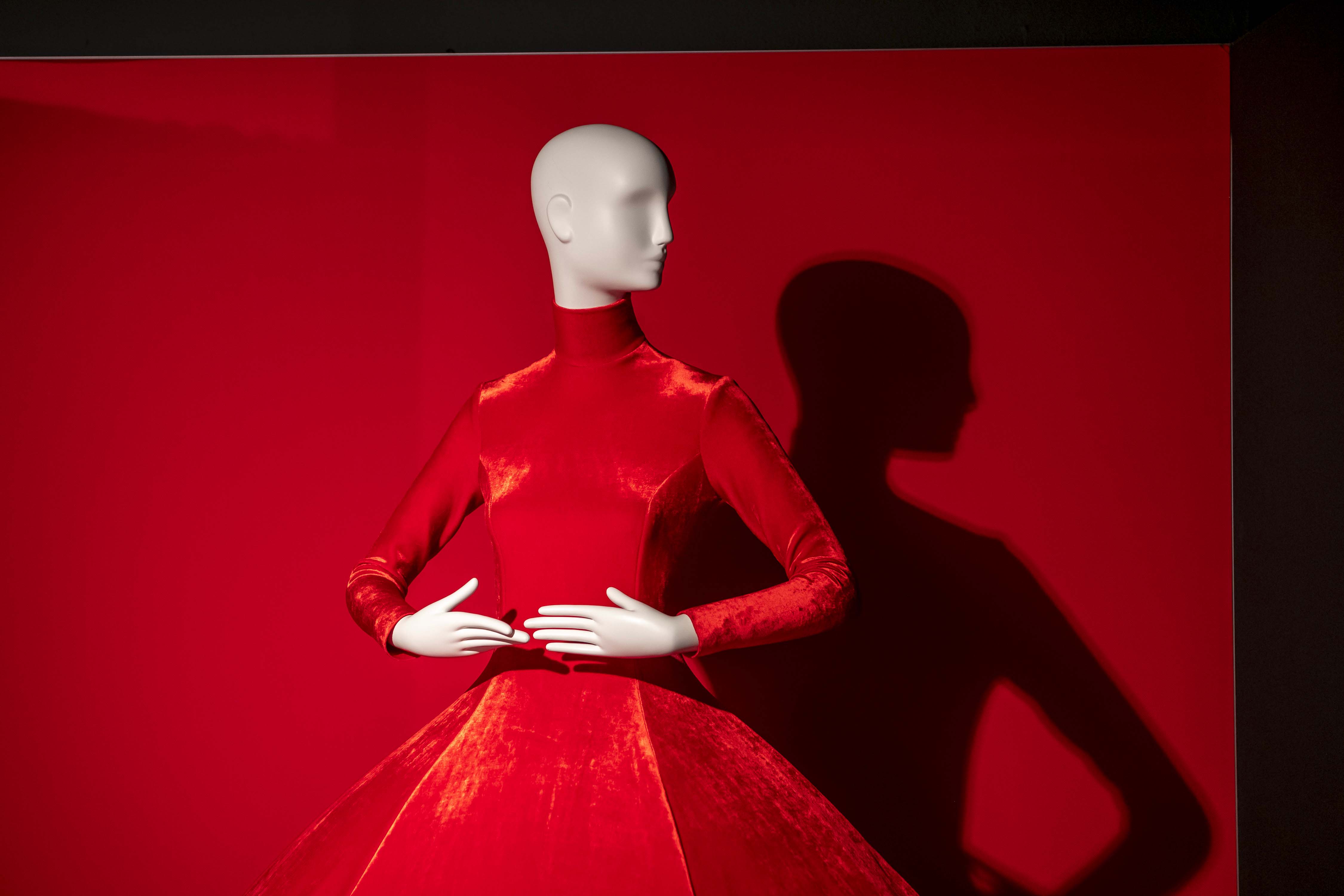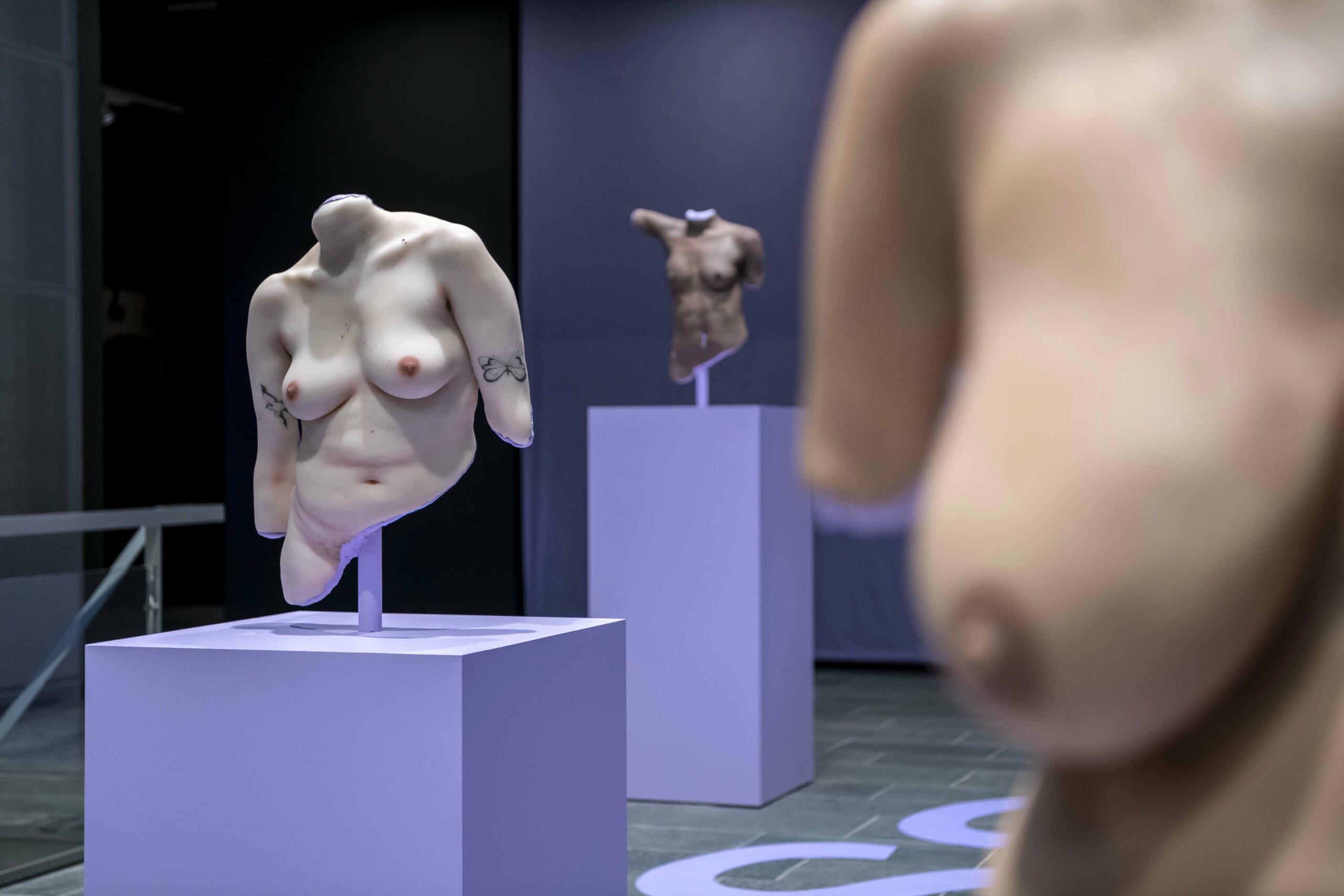DressUndress
Curator Eve Demoen describes DressUndress, an exhibition on now at Modemuseum in Hasselt, Belgium, as highlighting the tension between concealing and revealing. The show, which is co-curated by lingerie designer, Murielle Scherre, is explored through four principal themes: Revealing focuses on bodily display throughout the centuries; Concealing zooms in on efforts to cover up the body; Trompe l’oeil examines garments that deliberately suggest nakedness; and Metamorphosis explores fashion’s experimentation with body shape. Here, Demoen also cites how forces such as the zeitgeist shape society’s embrace of clothes that expose the body more explicitly.

DressUndress explores the question of revealing the body and nudity in fashion. How do you think fashion looks at the body today?
Fashion is about more than just clothing. It involves the entire body, its shaping, and its styling. Fashion highlights the body. It conceals, reveals and transforms it. It expresses ever-changing social and cultural norms and opinions about the body: about gender, physicality, beauty, sexuality, morality, modesty and decency. Fashion is the ultimate arena. It’s the place where those typically physical confrontations between public and private, desire and aversion, modesty and sexual display, revealing and concealing are shaped and expressed.
This exhibition takes us to that fascinating frontier. It explores items of clothing in which physicality, nudity, and camouflage are significant and meaningful: from the transparent chemise dresses of the late eighteenth century to the revolution of the exposed ankle in the Roaring Twenties and the emancipatory nude of the sixties, to the suggestive semi-nakedness of the looks that made 1990s supermodels rule the catwalks, to the hyperbolic silhouettes of Rei Kawakubo and the voluminously concealing dresses of Simone Rocha.

Is there an example of revealing or concealing that body that plays against expectations?
Today, on the catwalk and the red carpet, we see a tendency towards showing more of the body. We have a look in the exhibition, which is actually very recent, from the SS22 Miu Miu collection. When we selected and requested this specific look from the fashion house, we knew it would have impact, but we could not foresee that it would be this popular. The look even has its own Instagram account! We are showing these very recent examples because in our exhibitions, we always link historical fashion to a contemporary thematic and vice versa and we try to engage visitors into (critical) thinking about fashion, what they are wearing, and their perception of beauty/body ideals. I think the new generation is really questioning body ideals and especially ‘embracing your body’. The catwalk reflects the world of the younger generation. Furthermore, inclusivity and diversity are much discussed, and although there is still a long way to go, we do see a tendency towards more diverse body shapes and skin colours today. Especially the younger generation, with for example Glenn Martens for Y/Project, Ester Manas, Lily Schreiber, Marine Serre etc wants to discuss and change traditional patterns. It’s some sort of ‘liberation’ of the body.
It is interesting to see that the Miu Miu look is going around on social media, but on very different body types, ages, and gender. We see a more classic ideal on the body of Hailey Bieber; a very skinny but older body of Nicole Kidman; and on Paloma Elsesser on the cover of the Out of Body issue by ID magazine. This reflects today’s discussion and change in attitude towards beauty and body ideals. The term body positivity, and maybe more accurately embracing the body, is crucial in this story of the success of this kind of look.
There is also a ‘darker’ tendency due to the impact and influence of celebrity culture in which the body and beauty is something that can be made almost 100% artificially by cosmetic surgery and the influence of social media, internet and screens that show an unrealistic body image.

Have you noticed an evolution in stereotypes more recently?
Young people today find inspiration in the fashion of the Y2K period. They wear crop tops, low cut trousers, short skirts, …All elements that were part of fashion in the 2000s. The difference is that they have another vision on body ideals and embracing your body. In the 2000s you could not imagine someone wearing a crop top who did not have a perfect body. Today, we see many body types wearing a top that leaves the belly bare (also in advertorials, catwalk, …). I applaud this, today’s generation has the vocabulary to speak about this.
Wearing miniskirts is not new, however. In the ’60s we saw a liberation forced by young people on the streets. They protested and reacted against the (modest) classic tailoring and longer skirts of their parents. In the ’20s, along with a growing emancipation of women, the skirts became shorter, reaching its peak just below the knee. This enhanced freedom of movement for walking, dancing…

In the 18th century, Jean-Jacques Rousseau observed that “Wild women don’t have modesty because they go naked. The argument could be made that today’s women have even less modesty because they dress. Would you say that covering the body can also reveal it?
Clothing conceals. But what it conceals depends on the prevailing moral codes and zeitgeist. And therein lies a paradox because concealing is never simply about hiding. Concealing emphasises the hidden. Even if only implicitly, there is a constant interaction between revealing and concealing the body.
Clothing that conceals is often linked with the so-called ‘modest fashion’. Modest fashion is a style of dress in which people – usually women – wear less-revealing clothing, often in accordance with the spiritual and stylistic requirements of their beliefs, religion, or culture. The exact interpretation of ‘modest’ therefore varies across countries and cultures, but there is a general consensus that ‘modest fashion’ means loose, comfortable clothing that doesn’t flaunt the body, but instead covers it unobtrusively. In this context, the covering of the head, especially for religious reasons, has become a significant statement. In the early twenty-first century, the headscarf, and the veil – powerful symbols of a specific worldview – have become much discussed items of clothing.
To give a few contemporary examples from the exhibition; we have an iconic Balenciaga look that was worn by Kim Kardashian at the MET Gala in 2021. She was completely covered: face, head, everything. But her silhouette is so recognisable that, of course, everybody knew who she was. Other examples are Simone Rocha and Molly Goddard who use a lot of fabric and large designs and rethink the concept of femininity and beauty ideals by juxtaposing layers of fabric with transparent and see-through garments.
This interview has been lightly edited for length and clarity.
DressUndress continues at the Modemuseum in Hasselt, Belgium, until November 20th, 2022.



